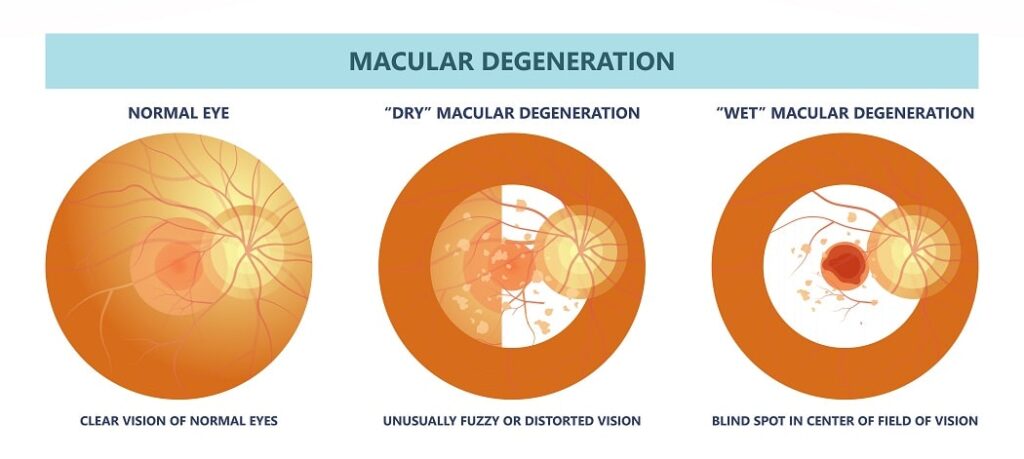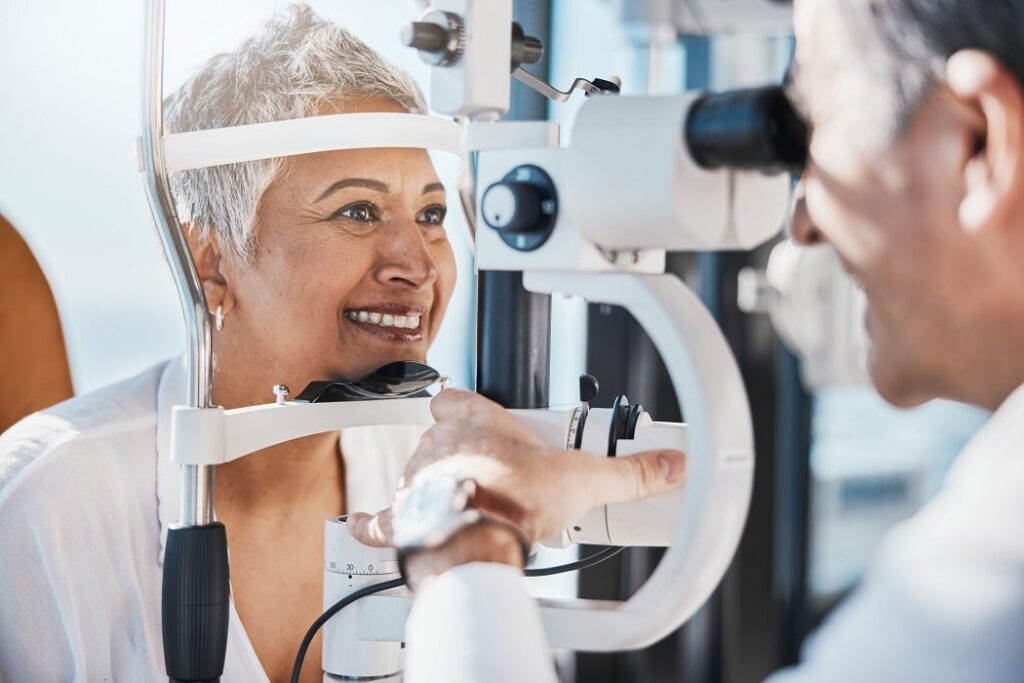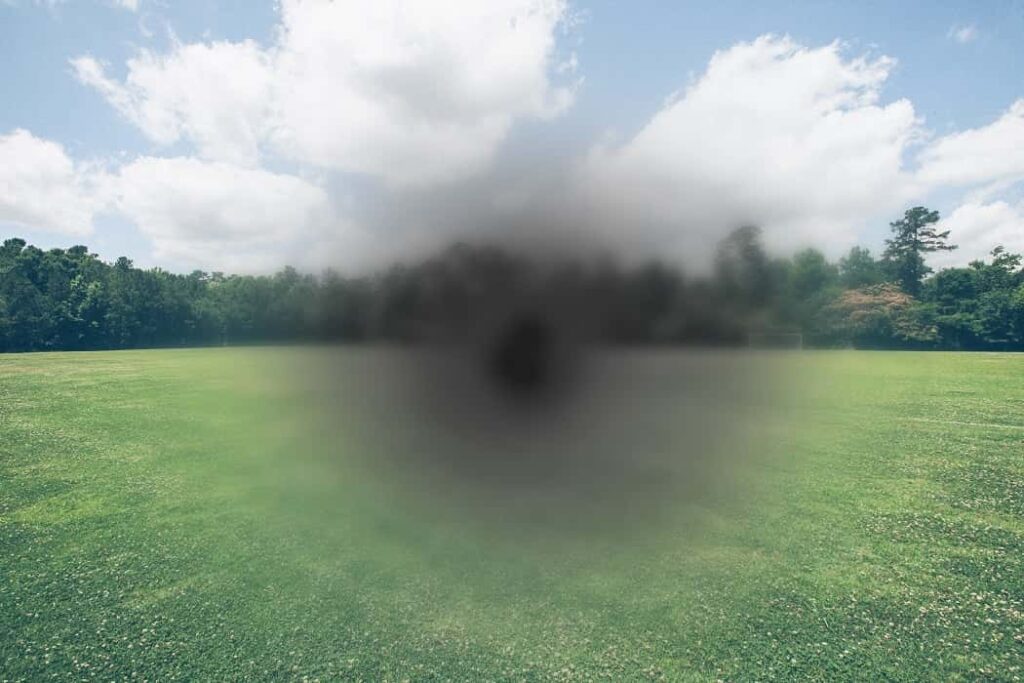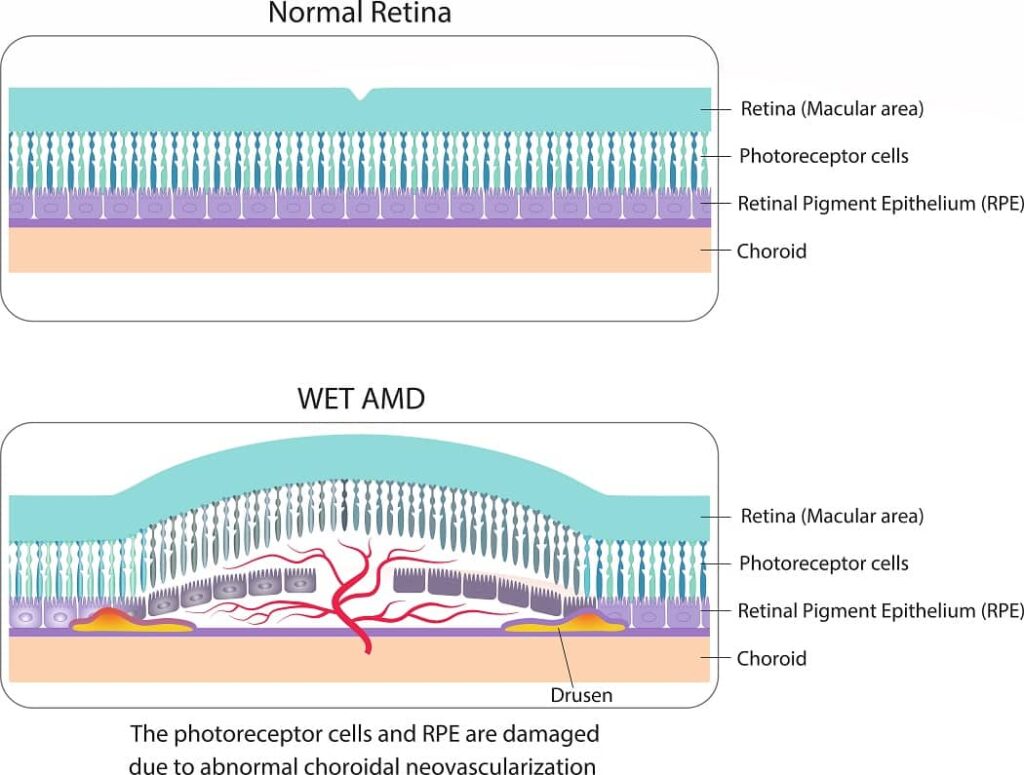
Updated: August 17, 2023

The difference between wet vs. dry macular degeneration is straightforward: dry macular degeneration is more common and doesn’t impact your vision as severely as wet degeneration. Wet macular degeneration can result in irreversible vision loss. But what about the risk factors of dry vs. wet macular degeneration? As you can imagine, there is more information to know between the two when it comes to wet vs. dry macular degeneration characteristics, many of which we will cover below. If you think that you are at risk for severe vision loss, our macular degeneration doctors can assist you.
There are two forms of macular degeneration that you could develop: wet and dry. The main difference between dry macular degeneration vs. wet is the severity. The most common type is dry macular degeneration and this isn’t as severe of a threat to your vision loss. Roughly 85-90% of patients who develop macular degeneration experience dry form. Age-related macular degeneration (AMD) is the slow deterioration of the cells of the macula as the retinal cells die off over time and are not renewed. The use of the term dry does not necessarily mean the patient has dry eye; it simply means the condition is not wet AMD. Some patients experience vision changes over time through excess development of soft drusen in the retina. While vision might be fine in the early stages, it can result in the loss of central vision over time. This condition can occur as early as fifty-five years of age, but it is not typically seen in patients younger than that.
Dry AMD progresses slowly and is the result of changes that occur underneath the retina in a region called the macula. The macula is located in the center of your eye and allows you to see clearly.
There are clusters of lipids (fats) and proteins that build up underneath the macula during dry AMD. These are referred to as drusen. The American Academy of Ophthalmology (AAO) reports that a significant AMD risk is the development of large drusen that impact central vision. Even with a healthy lifestyle, the thinning and wearing down of the macula can impact some people as they age.

Some differences between wet vs. dry macular degeneration can be seen in the symptoms. There are three different stages of dry AMD:
As soon as AMD advances to the late, dry stage, the symptoms become the same as wet AMD. In rare cases, some patients develop wet AMD following the development of dry AMD. To avoid the risk of complete vision loss, make sure to see your eye doctor regularly.
Although less common, wet macular degeneration is more serious when it develops. Developing wet macular degeneration means that new blood vessels begin underneath the retina, which is referred to as choroidal neovascularization. As these new blood vessels form, they can begin to leak fluid inside of the retina and cause vision difficulty or distortion. For both wet macular degeneration vs. dry, it’s important to consult your doctor as soon as possible, because you may have an increased risk for total blindness down the line. A common way to test for macular degeneration is by using an Amsler grid test; in an Amsler grid test, straight lines will appear distorted if there is fluid development underneath the retina.
When irregular blood vessels begin to grow underneath the eye’s macula, AMD occurs. As a result, these blood vessels begin to leak into the retina and impact vision. It’s not uncommon for scarring with the retina to occur. There’s a higher risk of faster vision loss with wet AMD when compared with dry AMD.

Let’s examine dry vs. wet macular degeneration symptoms. Common symptoms include straight lines that appear crooked, warped, or wavy. It’s also possible to experience the following:

It’s important to consider dry vs. wet age-related macular degeneration (AMD) risk factors. Even though older adults are at a higher risk of developing visual distortions from macular degeneration, there are other risk factors that contribute.
Thanks to various clinical trials and ongoing research, there are treatment options that can prevent the advanced stages of macular degeneration from developing. Here are some different treatment options that are currently available.

Despite how dry AMD affects the eyes, there isn’t currently a treatment that cures advanced dry AMD. However, some studies suggest that certain vitamins can keep dry AMD from getting worse. Common vitamins include vitamins C and E, copper, zinc, and beta-carotene.
Researchers are hard at work finding other treatments, including drugs that work to target the portion of the body’s immune system that attacks the retinal cells. Other researchers are looking into the use of stem cells for damaged cell replacement in the eye.
Wet AMD treatments revolve around preventing vision loss and reducing the volume of irregular blood vessels in the eyes. There are currently two different treatment options available for wet AMD, including:
| Nutrient | AREDS formula | AREDS2 formula |
|---|---|---|
| Vitamin C | 500 mg | 500 mg |
| Vitamin E | 400 IU | 400 IU |
| Beta Carotene | 15 mg | |
| Copper (Cupric Oxide) | 2mg | 2 mg |
| Lutein | 10 mg | |
| Zeaxanthin | 2 mg | |
| Zinc | 80 mg | 80 mg |
As you can see, there are many differences between dry macular degeneration vs. wet macular degeneration. There are low-vision tools that can help you adapt to any changes and increase the quality of the vision that you have. Here are some strategies to help deal with vision loss.

Even if you aren’t experiencing wet vs. dry macular degeneration symptoms, the best chance you have at stopping or slowing the disease is prevention. Make sure to see your eye doctor regularly, stay on top of taking your vitamins, prioritize a healthy lifestyle, eat leafy greens, don’t smoke, and take any other recommendations from your doctor.
Macular degeneration is a common cause of vision loss in older adults. Although dry AMD is more common, wet AMD is more severe and progresses faster. Both types can have impacts on your central and peripheral vision and may result in wavy lines or blank spots in your vision. Discover Vision Centers can let you know about risk factors and talk you through any symptoms that you might be experiencing. Contact a macular degeneration specialist for additional information today.